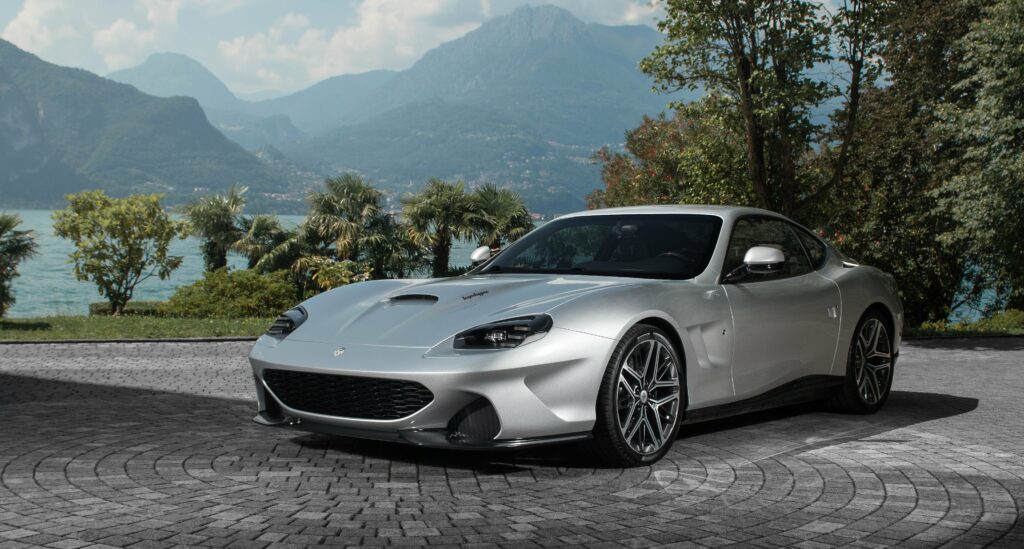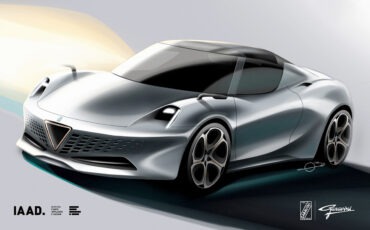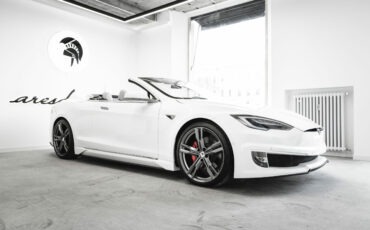
Touring Superleggera has announced the launch of the Veloce12, an exclusive, meticulously handcrafted Grand Tourer that marries the classic elegance of Italian coachbuilding with cutting-edge engineering. Inspired by the Ferrari 550 Maranello, the Veloce12 is a modern marvel that harks back to Touring’s storied past while pushing the boundaries of contemporary automotive design.
The Veloce12 is the epitome of luxury and performance, designed for driving purists who seek an unfiltered, analogue experience. Limited to just 30 units, each car will require over 5,000 hours of craftsmanship, with production beginning in Q1 2025. This exclusive creation offers a combination of elegance, speed, and exquisite craftsmanship that defines the art of grand touring.
Design: An Ode to Purity and Poise
The Veloce12’s design pays homage to mid-20th century Italian coachbuilding while embracing the most advanced contemporary innovations. The car’s carbon fiber body is sculpted with flowing lines and sleek surfaces, creating a seamless blend of grace and power. Every aspect of the design has been optimized for both aesthetics and aerodynamics through Computational Fluid Dynamics (CFD) studies. Additionally, FEM modal analysis ensures the structural integrity and stability of the vehicle, enhancing performance while maintaining its lightweight agility.
“With the Veloce12, we’ve honored our rich heritage while embracing modernity,” said Matteo Gentile, Head of Design at Touring Superleggera. “It is a testament to Touring’s legacy, and a glimpse into the future of grand touring excellence.”

Engineering: Precision and Power
At the heart of the Veloce12 is a naturally aspirated 5.5-liter F133 V12 engine, delivering 503 horsepower and 419 lb-ft of torque, surpassing the original Ferrari 550 Maranello. With a 0-100 km/h time of just 4.4 seconds and a top speed of 320 km/h (199 mph), the Veloce12 combines power with finesse. Enhanced cooling systems and a symphonically tuned exhaust courtesy of Supersprint ensure the engine performs at its peak, offering the raw, exhilarating sound that only a naturally aspirated V12 can provide.
Each engine undergoes a thorough inspection and rebuild process to ensure it is restored to as-new condition, while the chassis is reinforced for increased torsional rigidity. Advanced suspension technology developed with TracTive allows drivers to adjust the damping for a perfect balance of comfort and performance, no matter the road conditions.
Interior: An Italian Masterpiece
Inside the Veloce12, drivers are enveloped in a luxurious cabin that exudes Italian craftsmanship. Hand-stitched leather, meticulously selected materials, and ergonomically designed seats create a space that merges opulence with driver-centric performance. Every detail has been carefully considered to provide an immersive and comfortable driving experience, blending old-world craftsmanship with modern innovation.

A Commitment to Craftsmanship and Innovation
Touring Superleggera’s heritage in coachbuilding remains at the forefront of the Veloce12’s development. With nearly 100 years of experience, the Milan-based company continues to push the boundaries of bespoke automotive design. Advanced engineering techniques ensure every aspect of the Veloce12 meets the highest standards of quality, safety, and performance.
“The Veloce12 is a bold step forward for our brand,” said Markus Tellenbach, CEO of Touring Superleggera. “It advances our legacy by pushing the boundaries of design and performance, while maintaining the elegance and sophistication that define our cars.”
Availability and Pricing
The Touring Veloce12 is available to order now, with a starting price of €690,000, excluding taxes and the donor Ferrari 550 Maranello. Each car comes with a three-year warranty, while the engine is covered for one year or 7,000 miles, whichever comes first.

A New Era for Grand Touring
The Veloce12 stands as a statement of Touring Superleggera’s commitment to crafting extraordinary vehicles that deliver unparalleled driving experiences. It is a celebration of the past, a showcase of the present, and a vision of the future in luxury grand touring.











